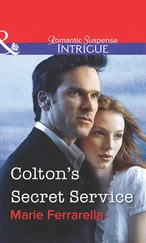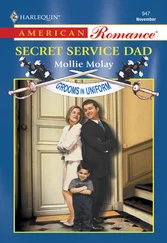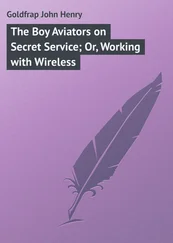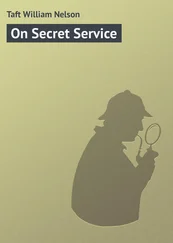But Nancy Reagan leaned over to him and said, “Take that helmet off right now. You look like a fool.”
“You saw a mood change,” the agent says. “And he took it off. That went on all the time.”
While Reagan and Nancy had a loving relationship, like any married couple, they had occasional fights.
“They were very affectionate and would kiss,” Air Force One steward Palmer says of the Reagans. But they also got mad at each other over what to eat and other small issues. Moreover, Palmer says Nancy could only push the president so far.
“We were going into Alaska. She had put on everything she could put on,” Palmer says. “She turned around and said, ‘Where are your gloves?’ He said, ‘I’m not wearing my gloves.’ She said, ‘Oh, yes, you are.’ He said he was not.”
Palmer says Reagan finally took the gloves, but he said he could not shake hands while he was wearing them. He said he would not put them on, and he didn’t.
Nancy tried to restrict her husband’s diet to healthy foods, but he reverted to his favorites when Nancy was not around.
“She was protective about what he ate,” Palmer says. “When she was not there, he ate differently. One of his favorite foods was macaroni and cheese. That was a no-no for her. If it was on the menu, she said, ‘You’re not eating that.’”
For all the spin from the Carter White House about not drinking, it was the Reagans who drank the least.
“I may have served the Reagans four drinks, maybe, with the exception of a glass of wine,” Palmer says.
When they were at the ranch, the Reagans would ride horseback together every day after lunch. Despite his cinematic roles in Westerns, he rode English, in breeches and boots. He usually rode El Alamein, a gray Anglo-Arab given to Reagan by former president José López Portillo of Mexico. Reagan had a routine he would follow.
“He would go up to the barn just outside the house. He would saddle up the horses, get them all ready, then he had one of those triangle bells,” former agent Chomicki says. “He would always bang on that iron triangle, and that was Nancy Reagan’s sign that the horses are ready, come on out, let’s go.”
One afternoon, Reagan was banging away on the bell, but Nancy did not appear. Finally he went into the house to get her. He came out with her looking unhappy. At that point, a technician from the White House Communications Agency told Chomicki that he had detected a problem with the ranch’s phone system. A telephone set must have been off the hook, and the technician wanted to check. Chomicki allowed the technician to enter the home. The technician soon came out holding a phone that had been smashed to pieces.
“She was on the phone,” Chomicki says. “That’s why she didn’t come up to the barn. Nancy never really liked the ranch. She would go up there because the president liked it. Other than the ride, she used to stay in the house almost all the time, and a good portion of the time she’d be talking to her friends down in L.A. For the president, the highlight of his day was to go riding with Nancy. And when she didn’t come out because she was talking on the phone, he threw the phone on the floor.”
Besides riding at the ranch, Reagan rode at the Marine Corps Base Quantico southwest of Washington, at Camp David, and in Washington’s Rock Creek Park. Agents assigned to his detail were trained in horseback riding by the U.S. Park Police. One of the agents, Barbara Riggs, was a skilled equestrian and required no training. Sworn in in 1975, Riggs was the tenth female to become a Secret Service agent. The first female agents—five in all—joined the agency in 1971.
Riggs was on a first-name basis with Reagan. When she fell off one of her own horses and suffered a concussion, he called her upstairs to the living room of the White House after she returned to work. Reagan handed her a book called The Principles of Horsemanship and Training Horses . With a wink, he suggested she reread it.
“Yes, I encountered sexual harassment, barriers, and attitudes that women should not be law enforcement agents,” Riggs says. “There were some who did not believe women were capable, either physically or mentally, of doing the job. But I also encountered many individuals who acted as my mentors and gave me great opportunities.”
In 2004, Riggs became the first female deputy director of the Secret Service. The Secret Service now has three hundred eighty female agents.
“You are always going to find a dinosaur in the bunch,” says Patricia Beckford, the eighth female agent hired. “You did have to prove yourself. But at a certain point, they realized that our .357 Magnum shot just as well as theirs.”
14

Hogan’s Alley
IT GOES WITH the territory that an agent may have to take a bullet for the president. But the actual instruction to trainees is a little more complicated.
“What we are trained to do as shift agents is to cover and evacuate if there is an attack,” an agent says. “We form a human shield around the protectee and get him out of the danger area to a safer location. If an agent is shot during the evacuation, then that is something that is expected. We rely on our layers of security to handle the attacker, while the inside shift’s main function is to get the heck out of Dodge.”
“People always say to me, ‘Hey would you really take a bullet for the president?’” says former agent Dowling. “I say, ‘What do you think, I’m stupid?’ But what we’ll do is we’ll do everything in our power to keep the bullet out of the event. And that’s what the Secret Service is all about. It’s about being prepared, it’s about meticulous advance preparation, and it’s about training properly so that when you do your job, you don’t have to bumble around for the steps that you take.”
The key to that is the James J. Rowley Training Center in Laurel, Maryland. The training facility is nestled between a wildlife refuge and a soil conservation area. The forest muffles the gunfire, the squealing wheels, and the explosions that are the sounds of training Secret Service agents and Uniformed Division officers. Like many of the buildings on this 440-acre spread, the center itself is named for a former director. Rowley headed the Secret Service when Kennedy was assassinated, and he spearheaded many changes after the tragedy.
The main classroom building, made of stone with a green roof, looks like it was lifted from a community college and dropped there. The building was named for Lewis C. Merletti, another former Secret Service director, who now heads security for the Cleveland Browns.
While most of the photos on the walls at headquarters downtown tell of sunny days, triumphant moments, and protectees well protected, the photos here in the Merletti building tell of the underside, the hard work of processing evidence; and the dark side, the failures and poignant reminders. There are photos from the JFK assassination and an overhead of President McKinley’s funeral procession in 1901. That’s the year Congress informally asked the Secret Service to protect presidents, a little late.
Along one wall, every graduating class has its class photo, going back to the start of formalized special agent training in the fifties. Back then, they wore fedoras. The photos proceed to the sixties, when agents had preppie hair, through the big-hair days of the seventies, to the “normal”-looking agents of today.
Here, new agents receive a total of sixteen weeks of training, combined with another twelve and a half weeks of training at the Federal Law Enforcement Training Center (FLETC) at Glynco, Georgia. To apply to be a Secret Service agent, an individual must be a U.S. citizen. At the time of appointment, he or she must be at least twenty-one years of age but younger than thirty-seven.
Читать дальше













